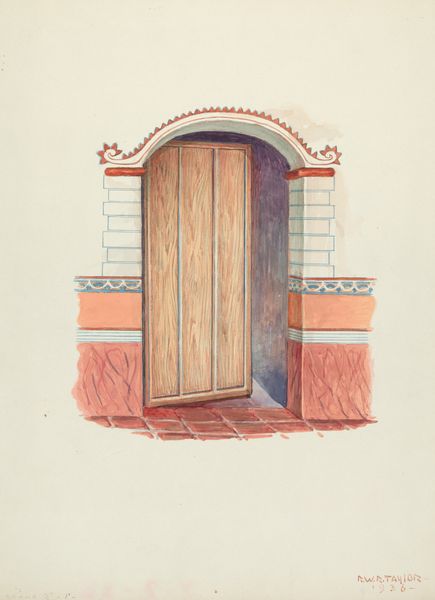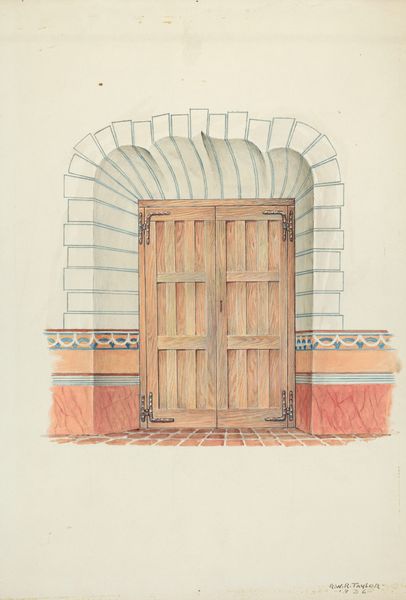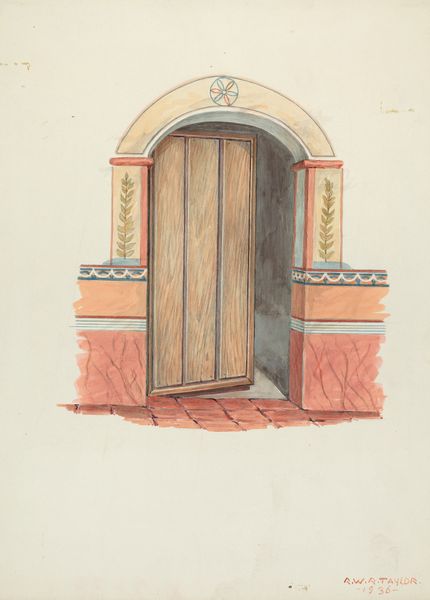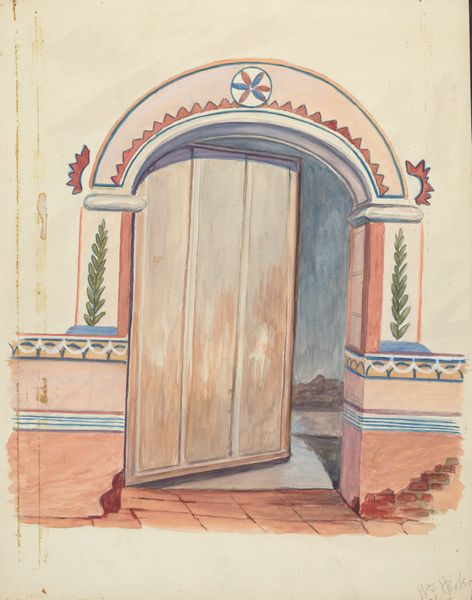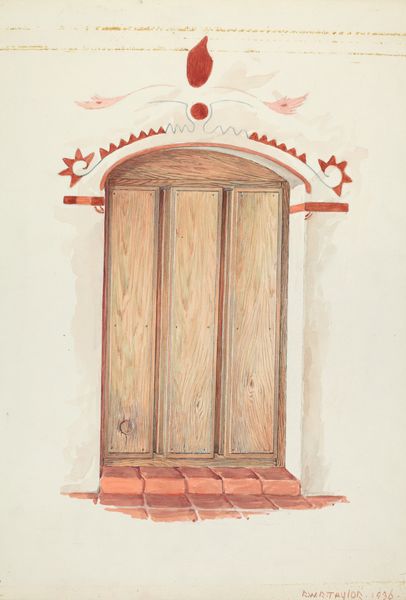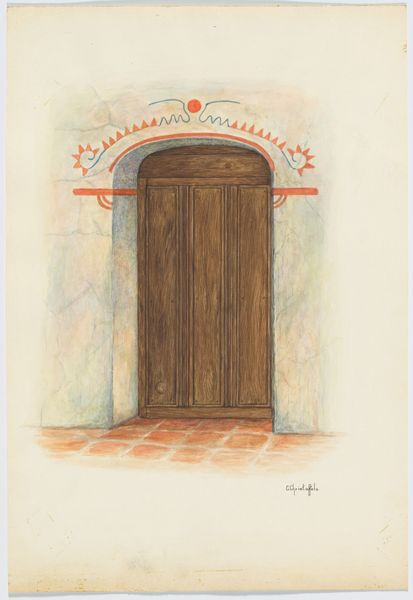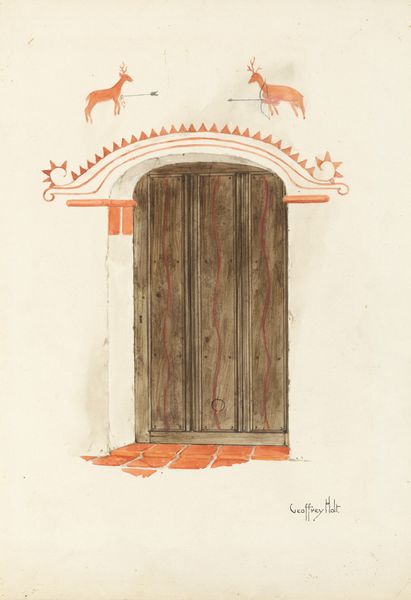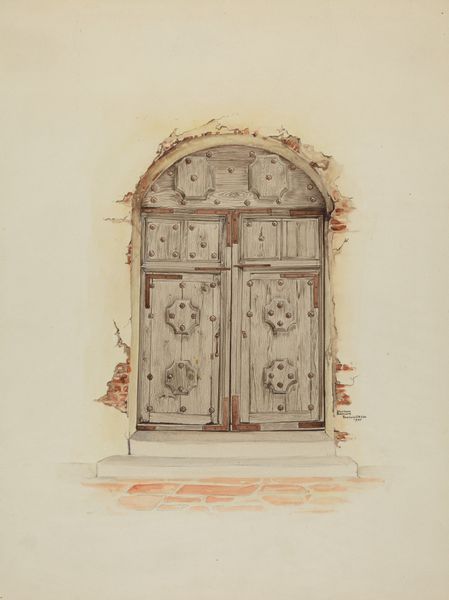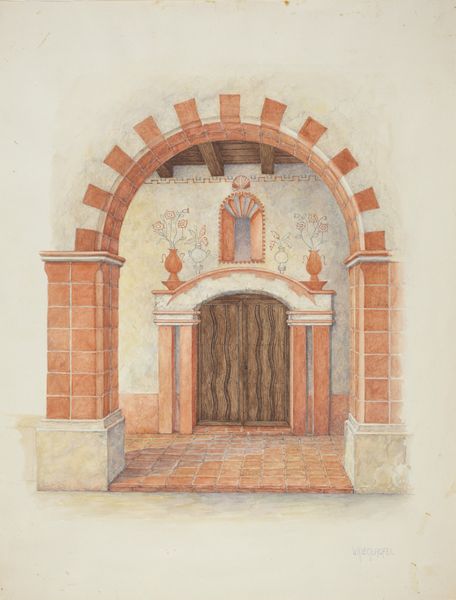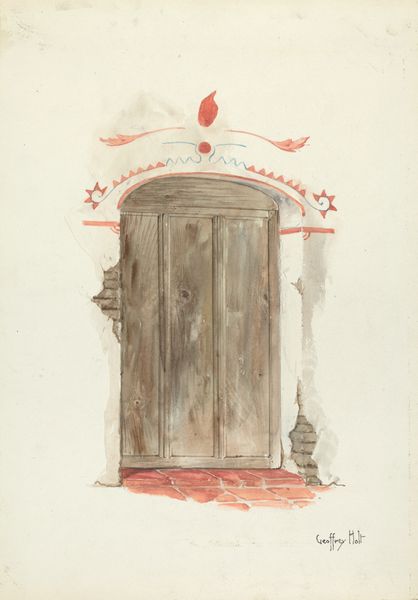
drawing, plein-air, watercolor
#
drawing
#
plein-air
#
watercolor
#
coloured pencil
#
regionalism
#
watercolor
Dimensions: overall: 35.5 x 24.4 cm (14 x 9 5/8 in.) Original IAD Object: Size of opening: 3'x7'1"
Copyright: National Gallery of Art: CC0 1.0
Editor: This is Robert W.R. Taylor's "Wall Painting and Door (Interior)," a 1941 watercolor that captures a doorway with a partially opened wooden door. It's striking how the colors are so muted and earthen. What do you see in this piece, considering its historical context? Curator: The apparent simplicity of this image belies a complex network of cultural and historical resonances. Consider that Taylor painted this in 1941. Doesn't the imagery—the architecture, the specific artistic style — evoke the fraught relationship between the United States and its southern neighbors? How might the choice to represent what seems like vernacular architecture speak to the politics of representation in the US during this period? Editor: I see what you mean. It seems almost like a romanticized view of another culture, but also possibly an attempt at respectful documentation? The Southwest was a popular subject for artists then, right? Curator: Precisely! But let's dig deeper. Consider the Regionalism movement, dominant at the time, and its implicit claims about authentic American identity. What does it mean to define 'American' art through subjects rooted in places bordering other nations, particularly those with histories of colonialism and conflict? It is almost certainly more complex than ‘respectful documentation,’ don't you think? Editor: Definitely. So it’s not just a simple depiction; it's loaded with ideas about American identity and cultural appropriation. I hadn't thought of it that way. Thanks! Curator: Exactly. It invites us to question whose stories are being told, and how, offering insight into how American identity was, and continues to be, constructed through engagement with, and often appropriation of, other cultures. Food for thought!
Comments
No comments
Be the first to comment and join the conversation on the ultimate creative platform.
